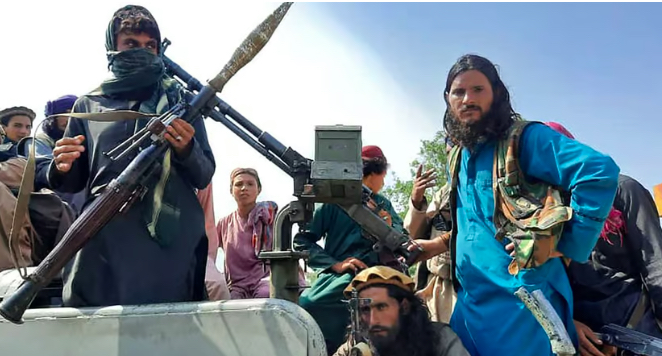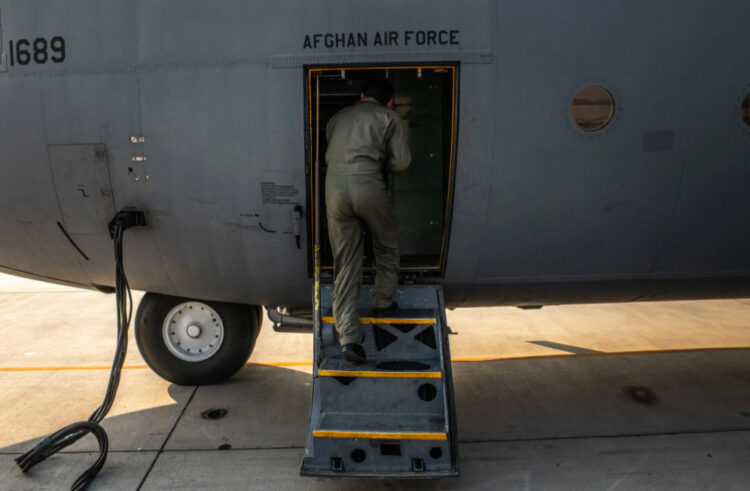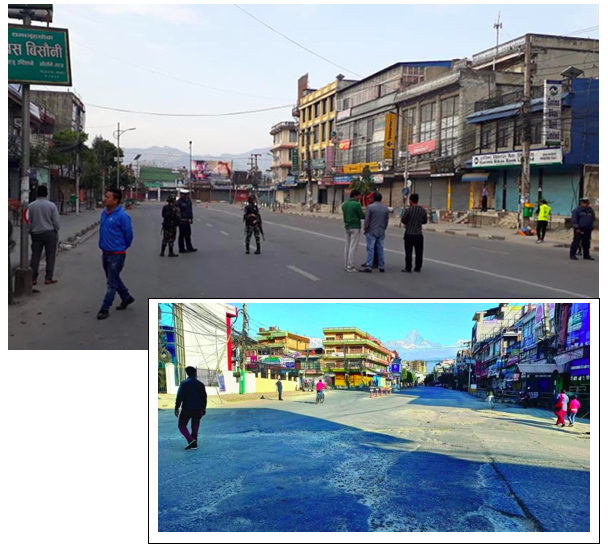MANTRAYA OCCASIONAL PAPER #02: 28 JANUARY 2017
THOMAS A. MARKS, PH.D.
Abstract
Though touted as acceptance of political reintegration, the Nepali Maoist move to end the 1996-2006 overt hostilities was at the time tactical rather than strategic. The party had no intention of supporting a parliamentary version of democracy and thus, for most of the 2006-2016 period, engaged in a covert effort to seize power. In this effort, it made ample use of terrorism. Ultimately, organizational, national, and regional circumstances caused the main Maoist movement to move decisively away from its covert approach. By that time, however, radical splinters had embraced the use of terrorism against rival political actors, creating a situation whereby local politics is yet a dangerous endeavour in circumstances and places.

Introduction
In a recent South Asia Intelligence Review (SAIR) posting, “Enduring Dilemmas,” S. Binodkumar Singh observes:
Though the insurgency has ended in Nepal, political violence continued through 2016. However, not a single insurgency-related fatality was recorded in 2016, and this has been the case since 2013, with not a single insurgency-related fatality on record. At the peak of insurgency, Nepal had seen 4,896 fatalities in 2002 alone, including 3,992 Maoists, 666 Security Force (SF) personnel and 238 civilians.[1]
The point of the title, as reflected in the content, is that while the Maoist quest for power has petered out (i.e., the “insurgency”), the roots of conflict not only remain but are driving a new round of challenges which place the very future of a unified Nepal at stake. Most salient of these is the issue of the tarai (also rendered as terai; the relatively narrow flatlands bordering India), the where the Madhesi movement claims to speak for a variety of cross-cutting cleavages involving everything from communal disadvantage to geographic discrimination to gerrymandered representation not reflecting present population.
This is quite accurate as far as it goes. But in using as its foundation a straw man of vanished insurgency, particularly one measured only in deaths (themselves a rather indeterminate category in data bases driven in large part by counts derived from English-language Kathmandu dailies), the article cedes the opportunity to discuss the continuing insurgent dreams of the Maoist splinters and the considerable violence they continue to interject at the local level in what otherwise could indeed be assessed as a much-improved post-people’s war situation.
It is this subject which I have addressed in several articles, most recently in Small Wars and Insurgencies, “Terrorism as Method in Nepali Maoist Insurgency, 1996-2016.”[2] Therein, as will be discussed below, I seek to grapple with the continued use of terrorism that falls short of lethal. Indeed, the emphasis upon “body count” above is misplaced, since in any insurgent situation, it is not deaths that dominate the statistics but assault upon the innocent for the purposes of terrorizing. Further, innocence extends not only to individuals but to property in most formulations of definition.
To stick with innocent persons for now, the point can be illustrated by using two quite typical assaults from the period of open conflict in Nepal, 1996-2006. As related in an article discussing an attack upon a village political activist:
Gopal Prasad Sharma, a Mahasamiti [steering committee] member and district-level leader of the Nepali Congress in Rukkum [sic], lost his eyesight after [Maoist] cadres sprinkled acid in his eyes during the insurgency. They also tortured him by sprinkling kerosene on his body and then setting him on fire. ‘After the incident, they chased me away from my village in Kholaguan-9. They have not returned my seized land yet,’ said Sharma, who was also a VDC chairman then. He had become a target of the Maoists for being actively involved in politics as an NC leader.[3]
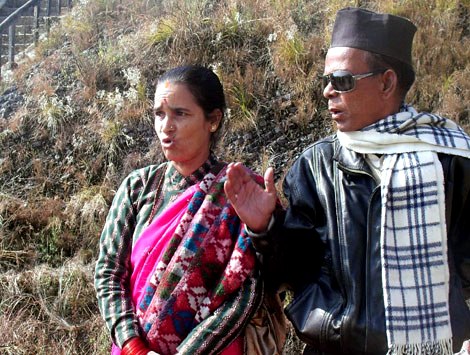
(Gopal Prasad Sharma, Photo Courtesy: Nepal Mountain News)
Similarly, as related in an article detailing an attack upon a teacher:
He is paralyzed on the left side of the body. He cannot walk without crutches. A scar on his head reminds him of the grim days of the Maoist insurgency. Kiran Yogi of Dang was harassed and thrashed by the Maoists for being a ‘bourgeois’ teacher. [¶] He was eventually abducted by a group of Maoist rebels on 21 August 2003 while taking classes at Nepal Rastriya Secondary School, Bardiya. A well-wisher of Nepali Congress, he was targeted by the Maoists for refusing to become a Maoist supporter. He was taken to a field near the school. ‘I was shot in the head by the Maoists,’ he said. He was in a coma for 23 days and did recovered [sic] later. But doctors could not remove the bullet lodged in his head and this has left him paralyzed.[4]
That either case might easily have resulted in death for the victim should not obscure the thousands who were assaulted with the clear intention not of producing death but example.
Throughout the prosecution of their “people’s war” (an insurgency), the Nepali Maoists used a mix of violent and nonviolent actions (e.g., terrorism mixed with propaganda); of military and political actions; of local and international actions; and of direct mobilization into their political organization (through both proselytization and coercion) in coordination with more subtle co-optation of civil society. Maoist targeting took the form it did, because political mobilization by democratic government, through both direct recruitment and ensuring popular access to the mechanisms of governance, was (and remains) the greatest threat to the violent effort of the Maoists to seize power. Democratic empowerment as realized through political parties and institutions integral to citizenship and governance (e.g., the educational and social welfare systems), together with civil society (particularly social welfare and justice organizations), are the premier challengers in efforts to mobilize the populace. Therefore, they must be co-opted or destroyed by an insurgent group. Destruction, in the first instance, takes the form of terrorism, progressing later, as necessary, to higher forms of warfare.[5]
A voluminous body of work on this topic has accumulated since World War II. Certainly the premier treatment remains Douglas Pike, Viet Cong: The Organization and Techniques of the National Liberation Front of South Vietnam,[6] which provides in considerable detail – citing insurgent documents and persons – the necessity that a new order accumulate strength by controlling the organizations and ideas through which the population goes about normal life. This allows all activity – from schooling to medical treatment to economic activity to administration of justice to festivals to clothing – to be channeled as necessary into support of revolutionary activity.
In Nepal, as has been well documented, terrorism to ensure obedience was widespread and ubiquitous. “Body count” was certainly important: The most iconic photo of the entire war is that of a teacher, Muktinath Adhikari, headmaster and 10th Grade instructor at Padmini Sanskrit Higher Secondary School in Lamjung District, who was murdered for a variety of reasons, to include refusing to pay the revolutionary tax demanded.[7] Teachers, in fact, comprised an important category of victims.
Nevertheless, the goal of such action, whether lethal or not, was local control upon which could be built a revolutionary counter-state to challenge the state. To claim this effort is no longer a factor in Nepal is to miss a development of ongoing concern. Overt warfare has again returned to covert warfare, with deaths the exception, but terror still present.
Back to the Future
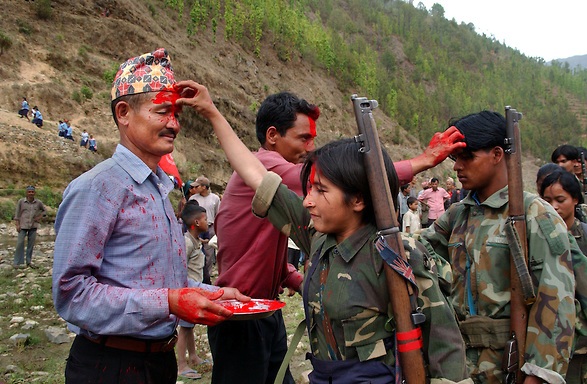
(Rukum District, Nepal, 22 April 2004: Maoist insurgents celebrate in Rukum district April 22, 2004 weeks after their attack on government troops in Beni when they overran the district headquarters, looting a bank, destroying the jail and torching government office buildings.)
For the sake of clarity, it is useful to begin with a conclusion of sorts: the (present) nature of the threat. Though Nepalis speak generically of the actions of “Maoists,” there is no longer a unified movement represented by that term but rather a fragmented spectrum that has seen until recently as many as ten parties – of which three were dominant – all claiming to be the true standard-bearers of the would-be revolution in Nepal. In May 2016, five of the major Maoist parties and a number of radicals who had drifted away from politics again reunited to form the Communist Party of Nepal (Maoist Centre) or CPN (Maoist Centre), but this still leaves the movement divided. For reasons that will become clear below, this has caused the situation to remain dangerous in many areas for normal political activism in support of democratic process.
For much of the 2006-2016 period, the now-mainstream Maoists of the CPN (Maoist Centre) emphasized terrorism as had been a key component of their insurgent action during the 1996-2006 period. They did so in order to shape the political battlespace. Hence, their recent opportunistic move towards participation in the very parliamentary system they had tried so hard to destroy has produced bitter splinters determined to push back against this perceived “betrayal” in favor of continuing “the revolution” through the use of violence as dictated by strategic circumstances. Unable or unwilling to deal with the situation, the state allows local violence to continue, particularly in obscure areas removed from vehicular access.
In such an assertion, agency surfaces as a central concern. The danger in dealing with the situation in Nepal today is to engage in teleological strategic assessment which holds that where the mainstream Maoists are now – in power as a result of parliamentary maneuvering – is how they intended the process to work out. Nothing could be further from the case. Strategy called for continuing the people’s war through emphasis upon the united front line of effort enabled by terrorism. That events played themselves out in contingent fashion resulted from dynamic structural alignments that were as unique as Nepal itself. The present, then, was anything but calculated. All that was certain was that violence in the form of terrorism was to continue to be a weapon of choice in the Maoist quest to rule.
Insurgency is a violent state-building project; i.e., construction of a new world, or counter-state, to challenge the existing world, normally embodied in a state or states(s). Terrorism – the attack on the innocent by sub-state actors in pursuit of political objectives – is always one method in this project; but at times, when the violence directed at noncombatants swallows the project itself, can become a logic; i.e., “terrorism” as the term evolved, the revolutionary project of a (often primary) group structurally estranged from its purported mass or social base.[8] The distinction between terrorism as a logic and as a method has evolved symbiotically with historical context. An unfortunate trend in the post-9/11 academic world, though, has been to conflate the originally separate bodies of discourse and study, to the extent that terrorism as an act for the establishment of local power (a profoundly political method) has more often than not been seen in the same analytical light as deeds intended for larger audiences, often national or even international. This further causes to be obscured the operational calculation at work. Terrorism need not be lethal, merely effective.
Hence most terrorism in Nepal, whether that of 1996-2006 or 2006-2016, has not resulted in deaths but injury, surrender (in the form of joining the instigators), or flight. Flight (as realized in terrified victims) has been key to producing a source of data from which the parameters of 2006-2016 violence. [9]
This present grows organically from the past. The now-mainstream Maoists committed unspeakable crimes both during and after the 1996-2006 decade of overt effort to seize political power.[10] This created a situation whereby violence became the common currency of political action; that is, terrorism became all but institutionalized in Nepal. The Maoist mainstream has in the last several years sought to move beyond atrocity – in exchange for a slice of the power it was unable to seize or to gain through free elections in the very violent post-2006 context – but this has created an expected outbidding situation, whereby the principal Maoist splinters have refused to renounce violence in an effort to emerge as the legitimate standard-bearers of revolution.[11]
The epicenter of violent splinter activity has been the original Mid-Western Hills birthplace of the Maoist movement. To the minds of the Maoist splinters still operating there, advocacy of and use of terrorism as dictated by local circumstances is the only way to continue the struggle to “revolutionize” the country and to attract the radicalized elements who feel betrayed by the mainstream Maoist party’s late embrace of democratic process. Thus the splinters engage in violence directed at the innocent, as required, both to neutralize their political activities and to force them to provide support through forced membership and revolutionary taxation (i.e., forced financial donations).
The original and still largest Maoist group is what for a majority of the period under consideration was named the Communist Party of Nepal or CPN(M), headed throughout by Pushpa Kamal Dahal aka Prachanda (“Fierce One” gained currency in international media, though “Renowned” has recently been offered as a translation). It changed its name to the Unified Communist Party of Nepal-Maoist (UCPN-M) after the end of overt hostilities (1996-2006) and the beginning of covert hostilities (post-2006). With the latest reunification, it has changed its name yet again, as noted above.
Within this larger party existed factions that were loyal to particular leaders outside the mainstream. One of these factions, headed by a dogmatic veteran of the movement, Mohan Baidya aka Kiran (“Ray of Light”), became increasingly alienated from the mainstream during the 2005-2006 period and by early 2011, minimally, was operating semi-autonomously and engaging in widespread acts of terrorism in Rukum. It finally broke away formally in late June 2012 under the original party name, the Communist Party of Nepal-Maoist (using CPN-M as its acronym). It took with it many of the most violent actors relevant to the discussion herein, perhaps one-third of the entire party, and is termed here, the “radical Maoists.” In the media, it was frequently termed simply, “Baidya Maoists.” Following its separation, its local violence included instances serious enough to require hospitalization of the victims, all political activists of rival parties. There was no unique clothing or identifying regalia used to distinguish this or any other splinter group.
This becomes of still more moment, because an even more radical and violent splinter, led by firebrand Netra Bikram Chand aka Biplab (also rendered as Biplav; “Rebel” is often advanced as the most useful translation), broke away in November 2014 from the Baidya Maoists and designated itself as CPN(M), using the original acronym of the Maoist movement. It took with it initially perhaps one-third of the Baidya Maoists (thus one-ninth of the original Maoist movement) and may be termed the “ultra-radicals.”
Finally, as noted above, some half a dozen other violent Maoist splinters likewise coalesced from those dissatisfied with these major factions; they also use the Maoist name but need not be discussed in-depth here.
To understand the issues which led to the split, hence to the continued use of terrorism, albeit in an often less lethal but still brutal form and scope in post-2006 Nepal, a brief overview of Maoist strategy in the past two decades is necessary. In the first decade under consideration, February 1996 to November 2006, Nepal was buffeted by the overt effort of the original group discussed above, the Communist Party of Nepal (Maoist) or CPN(M), to overthrow the existing government and remake society according to the Party’s understanding of Mao Tse-tung’s concept of “new democracy.”[12]
Simplifying a complex argument, the need to struggle against a common foe – in this case, international capitalism, as realized in the likes of India and the U.S., with the Nepali state its allies and creatures – requires a united front of all except the most die-hard elements. The requirements of establishing socialism and finally communism (e.g., confiscation of property, especially land) can be delayed in this “new democracy” until the situation allows their implementation. In Mao’s China, this occurred some five years after the 1949 victory, most of the population having been mobilized not in the name of social revolution but of nationalism.[13] In contrast, the extreme Maoist agenda of the Khmer Rouge in Cambodia implemented the national and social revolutions simultaneously, then with the 1975 victory over the Lon Nol government, declared the beginning of a radical new era: “Year Zero.”[14]
For much of the second decade under consideration, November 1996 to the present, the Maoists waged a covertstruggle to achieve the same end, power. Though they ostensibly reintegrated into normal politics as a consequence of a ceasefire agreement in April 2006 and a comprehensive peace accord that went into effect in November 2006 (with numerous follow-on agreements also signed), they continued to state (publically and in their private sessions) that they were involved in an armed revolutionary struggle strategically and were only proceeding by a different path tactically (i.e., “political struggle”). The explicit position of the party was that: (a) Democratic process was illegitimate, and majority votes did not represent the will of the people; (b) Rather, such votes represented the existing structure of power; (c) Therefore, that power structure still had to be dealt with using violence; (d) The only question was what form violence should take (a consideration which included timing); and (e) Consequently, participation in Nepal’s democratic system was a tactical gambit to further violent revolutionary options.[15]
As noted above, the party majority maintained this position until relatively recently. Thus it continued many of its covert, illicit activities even as its main organs moved above-ground. It not only embraced all elements delimited, “a” through “e,” but moved aggressively to use covert violence – terrorism carried out against local political opponents as opposed to overt guerrilla warfare – to solidify its position and to win parliamentary votes. It used specially constituted forces, notably the Young Communist League (YCL), to carry out these attacks. The Maoists were effective to the point that they were able to control elections and twice held the prime ministership, which allowed the Party to neutralize still further remaining resistance within the demoralized security forces and to expand its influence and solidify its finances.
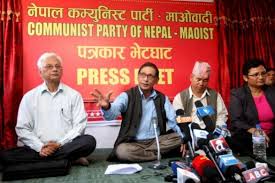
(Press conference by the CPN-Maoist, undated)
Gradually, however, the Maoists found themselves stymied by internal opposition which was buttressed by Nepal’s giant neighbor, India (which, for geostrategic reasons, had actually assisted the Maoists at times during the 1996-2006 conflict[16]). This led to an increasingly bitter intra-party debate as to the viability of continuing with opportunistic terrorism (as favored by the parent party) as opposed to a much more systematic use of terrorism combined with urban guerrilla warfare (as favored by the factions that ultimately splintered to form their own Maoist parties).
Outbidding occurred, in which the price of party unity was allowing the dissenting Baidya faction to adopt more aggressive use of terrorism and preparation for urban action as precursors for renewed open warfare, even as the main Dahal aka Prachanda faction had to acquiesce in violent local assaults by its own cadre lest it lose them to the more energetic opposition. It can be seen that this was a battle over “d” above, with the dissent demanding an explicit plan for ending “e” (participation in the democratic system); for there was no disagreement on “a” through “c.” Ultimately, these contending tendencies could not be held together, and the party split; the breakaway Baidya faction, as noted above, bolting in June 2012 from the parent Dahal aka Prachanda faction and declaring its intent to move rapidly and aggressively to assault the remnant of the state.
The practical result for politically active Nepalis was that they found themselves attacked throughout the country but particularly in areas of minimal (often ineffective in even the best of circumstances) or absent state presence. This reality intensified when similar constraints to those faced by the Dahal aka Prachanda faction also stymied the Baidya faction in its desire for outright resumption of armed hostilities.
The result was that its own radical wing, the Chand faction, as noted above, split in November 2014 and attempted once again to put in practice the desire for outright confrontation. Since this desire did not include being suicidal, its violence also focused upon covert terrorism in outlying areas, where it could achieve small victories and begin to rebuild the revolutionary organization it felt the other Maoist factions had foolishly let wither away.[17]
In recent fieldwork interviews, I found various terms used to express this ongoing strategy; e.g., “unified rebellion” and “build people’s revolt on the foundation of people’s war.” What these mean is what the Vietnamese called the “war of interlocking” or “all forms of struggle”; i.e., the radical and ultra-radical splinters seek to move beyond what in 1996-2006 they assess was an overwhelmingly rural-based, guerrilla mode of warfare (“people’s war”) to a mix of this with urban action (“people’s revolt”) to create “unified rebellion.”
In one sense, this is a misunderstanding by the splinters of the people’s war strategy that the unified Maoist movement waged. Urban action was an important part of the effort. In another sense, though, it does correctly grasp that this urban action was always tactical (e.g., assassinations) and did not support mass organizing in the cities that would support “people’s revolt.” As concerns potential targets, the distinction hardly matters; but in the longer-term, the “people’s revolt” would be far more violent. It was the goal of the Vietnamese communists in their now-legendary “Tet of ‘68” offensive (January-February 1968) in South Vietnam.[18]
Thus, ironically, Maoist threats and physical assault continued as a central feature throughout the period of peace, which in reality was one of covert conflict by the Maoists. From beginning to present, peace has been marred by Maoist terrorism that the state has been either unable or unwilling to control. Statistics have not been officially tabulated by any source for reasons which speak to the profound poverty and inequity within the society, the corruption and ineffectiveness of the police, and the distracted nature of national politics. Numbers of victims, however, for the period of peace, 2006-2016, appear to be in the thousands, most assaulted as opposed to killed.
The cumulative reality of what has happened and continues to happen in particular areas at the hands of Maoist splinters has received some attention, overwhelmingly in Nepali media.[19] No individual details of cases are provided here except as have already been published (e.g., above). This stems from the reality (in addition to confidentiality) that anyone with even the most tenuous identifying details will be hunted down and subjected to terroristic violence that invariably includes torture and even death.
This is one of the distinguishing characteristics of the conflict during both its overt and covert phases. As mentioned at the offset, it successfully blurs not only war and peace but the legal and the illegal. For the state remains more invested in process than in matters of individual justice, thus pursues what effectively is none of the cases that comprise the basis for this discussion.
Half a Loaf
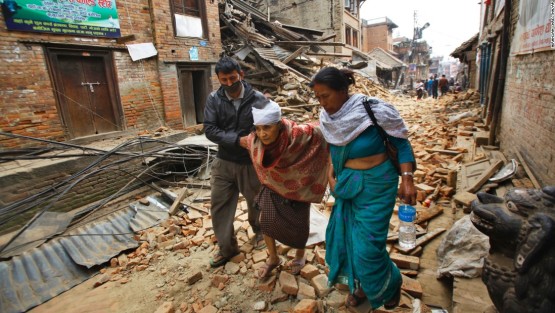
(Earthquake in Nepal, April 2015, Photo courtesy: CNN)
Having considered an overview of the situation, we can discuss recent events. It is often forgotten the lengths to which the mainstream Maoists went to reduce the second constitutional assembly, or CA II, to chaos.[20] Though there is no way of knowing, the April 2015 earthquake (with severe aftershocks in May 2015), the most severe since 1934, appears to have served as an intervening variable. Massive damage and widespread deaths – at least 9,000 dead and more than 22,000 injured – occurred even as the “Chand faction” was aggressively using terrorism to seize land and to establish parallel governance structures in areas best designed to generate publicity.[21] Reports indicated that it was also collecting weapons. In such context, the mainstream Maoist faction found itself forced to alter its strategic approach.
Quite apart from the factionalism already discussed, the movement had throughout its history struggled to balance the personalities and designs of its two senior figures, Dahal (a former school teacher with an MA; born 1954) and Bhattarai (also a former teacher but with a PhD; also apparently born in 1954), both well known to all analysts dealing with Nepal. Both were active in CAII, because, though relegated to a distant minority position in the popular voting, their mainstream Maoist faction remained important, particularly as it maneuvered constantly to reunite the party factions.
The price demanded by the radicals and ultra-radicals for restored Party unity, as already noted, was a commitment by the mainstream to the aggressive use of violence to “consolidate the revolution.” Anxious to keep this from happening, CAII leaders from the traditional majority parties gave Dahal and Bhattarai “gateway” positions (i.e., committees through which constitutional drafts flowed) in the drafting process disproportionate to the actual Maoist mainstream party count of delegates. This facilitated the completion of the constitution-writing process and the promulgation of the new constitution on 18 September 2015 but also proved decisive in yet a further split within the mainstream.
Faced with the task of electing the first officials to govern under the new constitution, the legal Marxists of the Communist Party of Nepal (Unified Marxist-Leninist), or simply UML – who were a slight second in CAII votes to the more centrist governing party, Nepali Congress – cut a deal with the Dahal faction and several other smaller parties to provide their crucial swing votes to create a UML majority. The price was a number of key Cabinet seats for the Dahal adherents to the exclusion of Dr. Bhattarai and his followers. As a result, Bhattarai resigned from the party to form a “New Force.”[22] This left the Dahal faction as the official “Maoists.”[23]
Their prizes from the UML included the all-important Home Affairs Ministry, which controls the police. The individual selected, Shakti Basnet, had been the personal secretary to Dahal during the latter’s term as prime minister. That term – and the violence-filled years leading up to it – as has been extensively discussed in media and literature – was filled with extensive use of terrorism, often of the most heinous sorts. Once in office, Dahal used his position to neutralize the already minimal police response to Maoist depredations. The system of justice functioned episodically. It is difficult to conceive of a situation where Basnet was ignorant of these crimes. The position of Home Minister, to be clear, was reserved for the Maoists (as were the others) as a party as the price for their support. Basnet was named by Dahal to be the party’s nominee, thus was appointed.
Likewise, Ganesh Man Pun, the head of the YCL, which played such a prominent role in the post-November 2006 covert violence was named by the Maoists to head the Commerce and Supplies Ministry, an ideal position, it would seem, for raising of funds for the party. Altogether, eight ministries were allocated to the Maoists. The apex post, though, was the reward bestowed on the former head of the Maoist armed forces (the PLA), Nanda Bahadur Pun, who was elected Vice President. His first recorded act was to call on Mr. Dahal aka Prachanda to thank him for naming him as the party’s candidate in the pre-arranged vote. The PLA, it goes without saying, also figures prominently in post-November 2006 terrorism, in particular through its actions staged from Shakti Khor camp.[24]
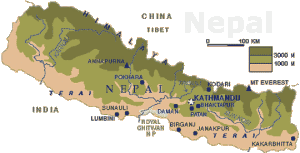
If this was the foreground, the background was violence at an altogether new post-war level. For the constitution was a series of imperfect compromises between traditional and radical positions, with the clear loser minority populations that had been mobilized by the Maoists with the promise that benefits would flow from seizure of power. Especially important, as well-discussed in the SAIR analysis noted above, were those populations clustered in Nepal’s traditional breadbasket, the tarai. The Maoist effort to exacerbate and then exploit the astonishing diversity of Nepali society had resulted in promises and commitments that could not possibly be honored. There was no intention to do so. The objective in making them was to gain power, then to deal as necessary with the backlash.[25]
In the event, as discussed above, the Maoists found themselves split by centrifugal tendencies and could not see through their strategy. Nepali society nonetheless bore the brunt of the energized divisive forces. The result was an explosion of violence led by important societal groups that had been mobilized by the Maoists through promises of a new distribution of power that ultimately could not be recognized in the constitution. In this violence, members of the radical and ultra-radical Maoist factions were identified and contributed to deaths among the police, as well as numerous lesser assaults upon security forces and normal members of society. Matters were made substantially worse due to an unofficial blockade of Nepal instituted by India pursuant to its own geostrategic concerns.
From this moment, issues of “federalism” moved to the fore in Nepali political deliberations. Put simply, how to deal with the destructive division unleashed by the Maoists even as violence had become institutionalized as a political methodology? Hence, “enduring dilemmas.”
By the time the blockade and the protests petered out in early 2016, the UML coalition was on such shaky ground that the mainstream Maoists saw an unparalleled opportunity to regain power through advocating a “unity” government – which they would head as the distant third party holding the balance between the Nepali Congress and UML. That the other parties would be willing to accept such an arrangement stemmed from a “perfect storm” of circumstances: (a) the willingness of the majority parties to let the Maoists try to sort out the disastrous situation they had created by strategic design; and (b) the need, at all costs, to neutralize looming transitional justice implementation. The result was that on 3 August 2016, Dahal began his second term as prime minister. Needless to say, he received no support from those who continued to call themselves the real Maoists and to demand that the revolution go forward.
That the main Maoist faction would settle for half a loaf, so to speak, stemmed – in the opinion of many, in which faction I find myself – from the imperative to avoid a meticulous examination of the crimes of the 1996-2006 period – which would open the door to what had been going on during the 2006-2016 period. There was little one could do to put the genie of societal division back in the bottle; but transitional justice was a potential mortal threat to the party.
Indiscipline by the security forces in 1996-2006 had been widespread, which meant there was bound to be a major public airing of state criminal behavior that had occurred in violation of procedures and laws. Prosecution would open up the possibility of reaching further up the state chain of command.
If this was the concern of majority state forces, the Maoists saw looming much worse. For their criminal acts were not violations of prevailing norms but pursuant to party policy. Even during the bitter fragmentation of the Party, therefore, the Maoist factions periodically came together at public sessions to denounce attempts by victims to pursue justice through the criminal law system. Such pursuit appeared increasingly likely as a series of Supreme Court decisions provided mechanisms to do so.[26] Gaining control of the government would place the Maoists in the position to deal definitively with the situation through perverted application of the law. This in fact proved to be the case. Transitional justice implementation has continued to be still-born.[27]
Nothing illustrated this better than the extraordinary letter sent by the Verdict Implementation Directorate (also translated as Judgement Execution Directorate) of the Nepali Supreme Court to the police and the Home Ministry asking, in effect, why a verdict calling for the arrest of mainstream Maoist figure and former lawmaker Balkrishna Dhungel, who had been convicted or murder, had not been implemented. In a straightforward case complicated by appeals and the political implementation of Bhattarai during his turn at prime minister, the Home Ministry claimed to be unable to locate the suspect, while a police source was quoted by Republica, a leading English-language, Kathmandu-published daily, as stating that the force was waiting “for the right political time.”[28] This, of course, speaks to the heart of the matter.
Once the mainstream Maoist faction again was in power, with the attendant ability to distribute positions and resources, many of the leading “radicals” (as noted previously) returned to the fold. Still, most “ultra-radical” leadership and much of the manpower of both “radical” and “ultra-radical” factions did not, and a burning question amongst Nepalis during my recent fieldwork was whether the violent splinters actually intended to move forward with their plans for renewed assault upon the system. Based upon my interviews with individuals at the leadership level who are presently underground, it is clear that they do.
It is the ultra-radical Chand faction which has assumed the lead in this effort. It has retained many of its weapons from the 1996-2006 period[29] and has also obtained supplies of explosives. It continues to drill personnel and to assault individuals as it deems necessary. Its strategy is to “build people’s revolt on the foundation of people’s war.”
This position has been widely disseminated within faction circles and even in interviews with Nepali media. I discussed it at length with several Chand faction leadership figures during my recent fieldwork, to include most notably with a Central Committee member (i.e., a member of the upper leadership). As the latter stated flatly: “At this point in time, we need to focus our attention on the reality that we [the Party] did not say [in opting for “peace”] that the people’s war was unnecessary or wrong. Rather, we were opting [through the united front] for people’s revolt. If that failed, then we would continue with the people’s war.”[30]
The point was that the mainstream had betrayed the strategy that had been agreed upon beginning with the September 2005 Chunwang Plenum and subsequently several more times in hard-fought meetings of the Party’s central leadership. What this strategy meant on the ground for numerous activists of rival political parties has been discussed previously. Violence was to continue as the driver for the Maoist effort. As was the case during the overt 1996-2006 phase of hostilities, there is little comprehensive the state can do to counter it and provide security for ordinary citizens.[31]
Continuing Struggle
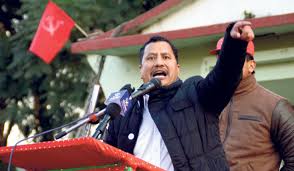
(Netra Bikram Chand aka Biplab)
In June 2016, for example, shortly before I arrived in Nepal for my latest fieldwork, the Chand group destroyed six cell-phone towers, citing alleged crimes against the people of Nepal’s major cellular firm, N-Cell. In September, shortly after I departed, a similar set of attacks by the same splinter targeted private schools within Kathmandu, again alleging crimes against the people.[32] On 6 December, four members of the same splinter were apprehended in moving a substantial lot of semiautomatic rifle ammunition and magazines.[33] Throughout this period, individuals were assaulted and threatened.
This should not surprise. As recently as 27 December of last year, Dahal aka Prachanda could not bring himself to condemn violence. Instead, at an event bringing together all communist parties on the birthday of Karl Marx, the once-again prime minister was reported as opining that “the fundamentals of Marxism cannot be ignored including the armed conflict as a tool to capture the state power.”[34]
In this confluence of circumstances is on display the heart of the matter: insurgency continues, albeit from a position of “back to basics.” A large portion of the Maoist manpower has over the past several decades taken its key leaders at their words and adopted violence as an integral form of political discourse – i.e., adopted terrorism as a routine option in dealing with others with whom they disagree. So ingrained was this methodology that when the mainstream Maoists sought to introduce a more subtle use of terrorism, the most radical one-third of the Maoist movement, as highlighted previously, split so as not to be bound by what it saw as the betrayal of revolutionary ideals.
When the same mainstream Maoists decided definitively to opt for participation in the long-denounced parliamentary system – yet continued to speak of (and even encourage) violence as an option – the estranged elements returned to first principles and began the process anew of “making revolution.” As is always the case in such a political project, terrorism is the foundational weapon, and the innocent are its victims. They need not be murdered to suffer.
END NOTES
[1] Refer to opening paragraph in: “Enduring Dilemmas”, South Asia Intelligence Review, vol.15, no.28, 9 January 2017, http://www.satp.org/satporgtp/sair/Archives/sair15/15_28.htm#assessment2 (accessed 23 January 2017).
[2] Thomas A Marks, “Terrorism as Method in Nepali Maoist Insurgency, 1996–2016”, in Shanthie Mariet D’Souza (ed) Special Issue of the Small Wars and Insurgencies (Routledge) titled ‘Countering Insurgencies and Violent Extremism in South Asia’, vol. 28, no.1, February 2017, pp. 81-118.
[3] See Krishna Prasad Gautam, “Endless Pain for War Victim,” Kathmandu Post, 18 March 2012; available at: http://kathmandupost.ekantipur.com/printedition/news/2012-03-17/endless-pain-for-war-victim.html (accessed 23 January 2017).
[4] Devendra Basnet and Ganesh BK, “A Conflict-era ‘Bourgeois’ Teacher Victim,” Republica, 15 August 2016, 4; available at: http://www.myrepublica.com/news/3842 (accessed 23 January 2017).
[5] To my knowledge, India has never faced an insurgent main force unit as present ultimately in Nepal and earlier in Sri Lanka. For those who have never considered the matter, this is the topic of films such as We Were Soldiers (Icon, 2002) and Hamburger Hill (RKO, 1987) – both available from Amazon – where military battalions find themselves faced by their opponent’s equivalents. In Nepal, guerrilla action eliminated the police stations (by 2003, more than half of which had been abandoned), while regular forces organized first as battalions and then brigades (with three divisional commands of which two were active in the main force war) began to assault army formations in late 2001. A benchmark battle was the November 2002 assault by four Maoist battalions (with support elements), numbering more than 2,000, upon the independent company of some 150 at Jumla in the Mid-Western Hills. Though repulsed, it was a harbinger of more such actions to come.
[6] Cambridge, MA: The M.I.T. Press, 1966.
[7] See “Victims Won’t Have to Wait Long for Justice: TRC Commissioner,” Republica, 16 January 2017; available at: http://www.myrepublica.com/news/13157 (accessed 23 January 2017).
[8] Terminology used throughout this contribution, particularly “insurgency” and “terrorism,” is that of longstanding in academia and the professional world. The seminal presentation of method versus logic remains Michel Wieviorka, The Making of Terrorism (University of Chicago Press, 2004 [new preface ed.]). For my own thoughts, see “Counterinsurgency in the Age of Globalism,” The Journal of Conflict Studies 27, no. 1 (Summer 2007), 22-29; available at: https://journals.lib.unb.ca/index.php/JCS/article/view/5936 (accessed 24 January 2017).
[9] Of particular value in my own work has been engagement with the U.S. asylum system and support network. Total cases in which Nepali individuals were granted asylum affirmatively in the U.S. number 3,248 for just the years 2007-2014 (the last year being apparently the most recent data). These affirmative cases, of course, represent but an unknown segment of the pending cases in the adversarial system that is “immigration court.” The adjective “adversarial” is operative. Apparently ill-understood (particularly in Nepali blog commentary) is the extent to which many if not most cases are confrontational, with supporting evidence being crucial to the outcome. Confidential court data may not be cited, but cases include some of the most hideous forms of torture I have ever encountered, to include torture-rape of rival female political activists. Descriptive detail in victim statements calls for multiplication of the numbers (e.g., “I was held prisoner with X others”). For latest U.S. Office of Immigration Statistics compilation of data see: https://www.dhs.gov/sites/default/files/publications/ois_yb_2014.pdf (total figure used in this note computed using Nepal entry at p.45) (accessed 24 January 2017); for scathing editorial comment the hostile context of the asylum system, see “The Horror of U.S. Immigration Courts,” The Washington Post, 10 January 2017, A14; for U.S. General Accounting Office (GAO) discussion, see Asylum: Variation Exists in Outcomes of Applications Across Immigration Courts and Judges (November 2016); available at: http://www.gao.gov/products/GAO-17-72(accessed 24 January 2017).
[10] The security forces also committed crimes, but the relative accessibility of data on these has caused government crimes committed in violation of the law to often overshadow the far more numerous (especially where death did not result) Maoist atrocities carried out as a matter of policy inspired and often commissioned by ideological justification.
[11] The phenomenon of “outbidding” is integral the literature dealing with political contention. For a succinct, relevant discussion in the context used here, see Geoff D. Porter, “Terrorist Outbidding: The In Amenas Attack,” CTC Sentinel 8, no. 5 (May 2015), 14-17; available at: https://www.ctc.usma.edu/v2/wp-content/uploads/2015/05/CTCSentinel-Vol8Issue54.pdf (accessed 23 January 2017). The topic may be further pursued in Donatella della Porta, Clandestine Political Violence (NY: Cambridge University Press, 2013), 70-112 (Chapter 3, “Competitive Escalation”).
[12] Excellent discussion of the concept may be found in Manoranjan Mohanty, The Political Philosophy of Mao Zedong, rev. ed. (Delhi: Aakar, 2012), 25-74 (Chapter 1: “Theory of New-Democratic Revolution”).
[13] See e.g. Frank Dikötter, The Tragedy of Liberation: A History of the Chinese Revolution 1945-1957 (NY: Bloomsbury, 2013).
[14] Among numerous works available, see especially Ben Kiernan, The Pol Pot Regime: Race, Power, and Genocide in Cambodia under the Khmer Rouge, 1975-79, 3rd ed. Ed. (New Haven, CT: Yale University Press, 2008); also Kiernan, How Pol Pot Came to Power: Colonialism, Nationalism, and Communism in Cambodia, 1930–1975; 2nd rev. ed. (New Haven, CT: Yale UP, 2004).
[15] I have dealt with this strategy in numerous works; see e.g. “Prachandagate: Critical Analysis,” Republica, 12 May 2009 (internet release 09:18:19, Tuesday; no active link found); “Will the Real Prachanda Stand Up?” The Kathmandu Post, 21 June 2009, 7; and “Will the Real Prachanda Stand Up?” South Asian Intelligence Review 7, no. 49 (15 June 2009); available at: http://www.satp.org/satporgtp/sair/Archives/7_49.htm (accessed 24 January 2017). Also useful is Aditya Adhikari and Pranab Kharel interview with Deepak Prakash Bhatta in “Maoist Combatants are Still Being Politically and Militarily Trained,” The Kathmandu Post, 7 September 2009; available at: http://kathmandupost.ekantipur.com/news/2009-09-07/maoist-combatants-are-still-being-politically-and-militarily-trained.html (accessed 24 January 2017).
[16] That democratic India should back Maoist insurgents/terrorists against a fellow South Asian democratic government should not surprise. Ensuring regional hegemony has made such cynical action a normal element of New Delhi’s foreign policy, as I have discussed in my extensive work on Sri Lanka, based upon field research in that country during its conflict. See e.g. “Sri Lanka and the Liberation Tigers of Tamil Eelam,” Ch. 14 in Robert J. Art and Louise Richardson, eds., Democracy and Counterterrorism: Lessons From the Past (Washington, DC: United States Institute of Peace Press, 2007), 483-530. In the Nepali case, as happened with Sri Lanka, India moved back and forth between its support of the insurgents and the Nepali government. Until the very end of the conflict, the top Maoist leadership was in India. Though informed by Kathmandu of the locations, New Delhi refused to move – except against figures (e.g., Baidya) that it assessed as standing in the way of its geopolitical objectives.
[17] This meant recreating parallel structures such as the “people’s government” declared on 25 January 2016 in Bajhang District of the Far-Western Region. See Basanta Pratap Singh, “Chand-led Maoist Announce Formation of People’s Govt in Bajhung,” Kathmandu Post, 25 January 2016; available at: http://kathmandupost.ekantipur.com/news/2016-01-25/chand-led-maoist-announce-formation-of-peoples-govt-in-bajhang.html (accessed 23 January 2017); reprint with better display of accompanying visuals is at: http://dazibaorojo08.blogspot.com/2016/01/nepal-chand-led-maoist-announce.html (accessed 23 January 2017).
[18] “People’s revolt” or a massive popular insurrection (rising up) has been a consistent feature of communist romanticism since Marx was impacted by the 1848 revolutionary upheaval in Europe. Even insurgents as systematic and ruthless as the Vietnamese were not immune to the seduction of the fantasy; excellent discussion available at: http://en.citizendium.org/wiki/General_Offensive-General_Uprising (accessed 24 January 2017); see also Ngo Vinh Long, “The Tet Offensive and its Aftermath,” in Marc Jason Gilbert and William Head, eds., The Tet Offensive (Westport, CT: Praeger, 1996), 89-123.
[19] Archives of English-language Nepali media are generally available on-line but difficult to use for research purposes. Daily compilation of “clips” has proved more practical. For a recent personal contribution to this literature see my “’Post-Conflict’ Terrorism in Nepal,” The Journal of Counterterrorism 21, no. 1 (Spring 2015), 24-31; available at: https://issuu.com/fusteros/docs/iacsp_magazine_v21n1_issuu (accessed 24 January 2017). This article builds upon that work.
[20] For recent discussion, see Ashok Dahal, “3 Among CA Brawlers Have Become Ministers,” Republica, 18 January 2017; available at: http://www.myrepublica.com/news/13280 (accessed 23 January 2017).
[21] To my knowledge, no study has emerged dealing with the role of seized property in the ongoing violence under discussion. That there is a considerable problem is obvious in even the most cursory examination of press coverage, but systematic tabulation and the extent of now-contested titles (occasioned by Maoist redistribution and resale of land) has not emerged. For a revolutionary take on the issue, see “Maoist Row Over Returning Property,” The Expresso Stalinist; available at: https://espressostalinist.com/category/internationalism/asia/nepal/(accessed 24 January 2017).
[22] Bhattarai’s New Force Party, Naya Shakti Nepal, was formally launched on 12 June 2016.
[23] Given this development, there is poignancy in the evidence of past close relations between Dahal and Bhattarai that has recently emerged. See e.g. Shreejana Shrestha, “Shadowing Prachanda: A Photographer’s Pictorial Documentation of Pushpa Kamal Dahal From revolutionary to Two-Time Prime Minister,” Nepali Times, 25 November 2016; available at: http://nepalitimes.com/article/nation/Shadowing-prachanda,3383 (accessed 24 January 2017).
[24] No study exists that explores the full range of criminal activities with which Shakti Khor became connected in order to continue the cash-flow necessary for Maoist operations. During the period under discussion, my research has found that Shakti Khor camp was a major center for carrying out revolutionary taxation (i.e., criminal fundraising) and terror activities, to include murders committed after kidnapping and torture of the victims. Evidence implicates other Maoist regroupment camps engaged in such activity. Cutting closer to the bone, portions of the various allowances and support funds intended for the Maoist combatants in the regroupment camps were siphoned off to the Party by the leadership. Nepali media have placed this figure alone at NPR 3.08 billion or USD 30,800,000 (at an average 2013 exchange rate of USD 1 = NPR 100). For detailed figures used to construct total used here, see e.g. Narayan Manandhar, “Impeachment vs Appointment,” The Kathmandu Post, 25 September 2016; available at: http://kathmandupost.ekantipur.com/printedition/news/2016-09-25/impeachment-vs-appointment.html (accessed 23 January 2017).
[25] “Exacerbate” is the key word in my assessment. This is not a claim that the Maoists created the contradictions which they exploited. These were of longstanding. The debate, which continues to the present, revolves around the extent to which division was latent and gradually being overcome or was integral to a system, often violent, of exploitation by a hopelessly flawed state. I do not subscribe to the latter opinion. For excellent summary of issues see CK Lal, “Rotary of Revolutions,” Republica, 16 January 2017; available at: http://www.myrepublica.com/news/13133 (accessed 24 January 2017).
[26] The Maoists appear to have gone to some lengths to ascertain the identity of those filing claims and then to act against them. (It must be noted that the same charge has been levelled against the security forces.)
[27] A particularly well done summary of the issue may be found in Indu Nepal, “Nepal’s Botched Truth and Reconciliation Program,” Record Nepal, 21 December 2016; available at: http://scroll.in/a/812855 (accessed 24 January 2017; Record Nepal link inactive).
[28] For this and other extraordinary but undoubtedly accurate quotations, see Deepak Kharel, “Murder-convict Dhungel hasn’t been arrested because police don’t want it,” Republica, 6 January 2017; available at: http://www.myrepublica.com/news/12582 (accessed 24 January 2017); see also the revealing information available at Binita Dahal, “Political Protection,” apparently Nepali Times, 31 October 2011; not accessible at URL provided but on Pramb’s Weblog; available at: https://pramb.wordpress.com/2011/10/31/political-protection/(accessed 24 January 2017).
[29] Best evidence supports a position that a substantial number of the Maoist weapons in use when the November 2006 peace accords were signed were not turned in to the United Nations inspectors. In particular, many of the most lethal weapons vanished. Though weapons turned in were inventoried, there apparently has to date not been a comparison of those stocks with weapons lost by the security forces during the conflict, especially more advanced types, such as semi-automatic rifles.
[30] Interview, 4 September 2016; in Nepali with simultaneous translation into English.
[31] I deliberately sidestep here the issue of will, which Nepali media commentary bitingly presents as lacking in a system of governance that – as understatement would put it – “consistently disappoints.”
[32] Media identified the perpetrators as members of the Maoist Chand group (see text following), the most radical of the splinters under discussion, as did a well-informed former director of military intelligence in a personal communication, 14 October 2016.
[33] Media cited government sources in identifying the detained individuals as belonging to the Chand group. They were in the possession of 205 5.56 rounds and 9 loaded magazines for the Indian-made INSAS semiautomatic rifle, a weapon which had been used by government during the period of overt hostilities. A number had been lost yet not turned in during demobilization.
[34] Rather than a direct quote, the reporting used “has said.” There is little doubt, though, that the words were uttered. See “Fundamentals of Marxism Cannot be Ignored: Dahal,” The Kathmandu Post, 27 December 2016; available at: http://kathmandupost.ekantipur.com/news/2016-12-27/fundamentals-of-marxism-cannot-be-ignored-dahal.html (accessed 25 January 2017).
(Dr. Thomas A. Marks, a member of the advisory board of MISS, is Distinguished Professor and Major General Edward Lansdale Chair of Irregular Warfighting Strategy at the College of International Security Affairs (CISA) of the National Defense University (NDU), Washington, DC. The views expressed are strictly his own. This occasional paper is published under Mantraya’s ‘Mapping Terror and Insurgent Networks’ project. All Mantraya publications are peer-reviewed.)
To download a PDF version of the occasional paper, CLICK BELOW.


